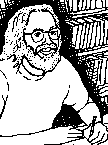CEDICAM
We arose early on Tuesday morning to drive a couple hours north to Nochixtlan. We met with Jesús León, one of the leaders of CEDICAM (Center for the Integral Development of the Campesinos of the Mixteca Alta) at a school for training of small farmers that was still under construction. CEDICAM was formed in 1994 to deal with environmental issues of erosion, conservation of soil, and irrigation. Rather than embracing an explicit and overt political agenda, CEDICAM is a development organization that works with groups such as Bread for the World, Maryknoll, and World Neighbors.
Nochixtlan has experienced some of the worst erosion in all of Mexico, largely from over grazing, plowing the topsoil, and destruction of forests for industrial production. Jesús described CEDICAM’s work over the past 10 years to conserve more than two thousand hectares of land through programs of sustainable agriculture. This includes a system of canals to prevent a run-off of rain water. An unexpected but welcome side affect of this program has been a recharging of the ground water supply. They also encourage intercropping and allowing land to lay fallow. Reforestation programs replant both pine and native trees. CEDICAM also encourages use of non-chemical fertilizers and pesticides. They are developing organic compost and worm farms as alternatives. A seed bank saves local seeds in order to break a dependency on genetically modified seeds. CEDICAM has a campaign with posters, flyers, and videos to defend local corn production against Monsanto. Vegetables are raised in greenhouses. The overall goal is one of encouraging autonomy, food sovereignty, and food security.
Jesús emphasized that the fundamental goal was one of capacitación, or popular education and training. The school where we met is designed to serve that purpose of teaching sustainable development. Value is placed on local products rather than assuming that items from the outside are better. Jesús also explained how neoliberal economic policies bring in cheap corn from the United States that undercuts local production and encourages migration out of the area and to the United States. This is a key issue, and they are working to sensitize young people to the possibilities of staying and working in the area. Somewhat ironically, the war in Guatemala in the 1980s brought refugees from there into Oaxaca and this project benefits from their knowledge and experience. Without the conflict in Guatemala, they would not have come. In this way, a good result came out of a bad situation.
CEDICAM carries the name ‘campesino’ (peasant or small farmer), not Indigenous in its name, even though it would appear to outsiders that the area is a primarily Indigenous area. Jesús said that they debated naming the organzation “campesino y indígena” but thought that it would imply a division into two groups. Instead, they went with the broader and more comprehensive label “campesino.” Jesús noted that which academics tend to overstate the differences between campesinos and Indigenous, that they perhaps understated these distinctions. Nevertheless, with their milpas it is clear that farmers are following Indigenous practices.
After our discussion with Jesús, we drove two hours over increasingly rough roads to the misnamed Tres Lagunas, since only one of the three lagunas still survives. The community greeted us with glasses of coca-cola, and then served us lunch. Community leader Sosimo Santos López welcomed us with the statement that we were at full freedom to ask what we wanted, to take away both the good and the bad from the community. He described how they have been working with CEDICAM for the last several years in order to improve their lives. They work with Campesino to Campesino to reduce chemical usage and put these theories into practice. Sosimo pointed out that six years ago the area was all dessert, but with a reforestation program the land was making a come back. The community has prohibited hunting, and how wildlife is coming back. The community has experienced a strong out migration, to the point where the local school closed for a lack of students.
Domitla, a traditional healer, explained the strong–and in her mind negative–impact that family planning has had on the community because now there are fewer kids. Before giving birth was better with a midwife, but now many women go to clinics where they have bad experiences with western medicine that is too anxious to use C-sections. Domitla emphasized that women had better care before when they received it in their homes.
After these discussions we visited a couple of farms. Walking across one field I noticed some pottery shards. One of the community members told me that some preliminary archaeological studies had been done in the region that pointed to a 2500 year-old village. Tres Lagunas is a community with a long and rich history that has only recently been disrupted with erosion and migration.

